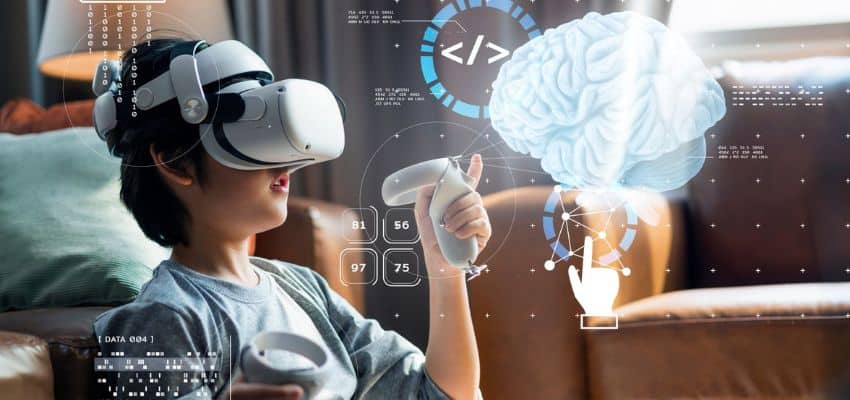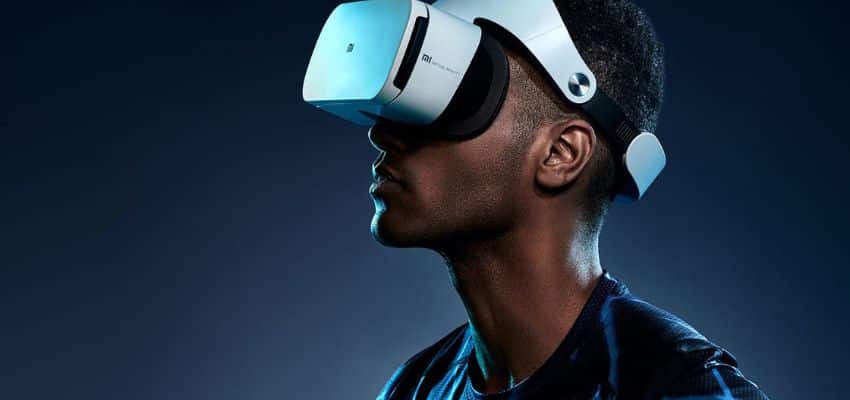Enhancing Medical Training through Virtual Reality

Virtual Reality (VR) is rapidly transforming the landscape of medical training, offering innovative solutions to the challenges faced by traditional educational methods. By immersing students in realistic simulations, VR allows for experiential learning that enhances skills, improves knowledge retention, and increases confidence before entering real-world clinical environments. This article explores how Virtual Reality is reshaping medical training, delving into its benefits, applications, challenges, and future potential.

The Role of Virtual Reality in Medical Education
The integration of Virtual Reality into medical education has sparked a revolution in how healthcare professionals acquire knowledge and develop essential skills. This section examines the foundational aspects of VR in medical training, discussing its significance, applications, and potential impact on future healthcare providers.
Understanding Virtual Reality Technology
To comprehend the role of Virtual Reality in medical training, it’s vital to first understand what VR technology entails. Virtual Reality creates computer-generated environments that simulate real-life scenarios, enabling users to experience and interact with these environments as if they were real. This immersive quality provides an engaging platform for learners to practice procedures, engage with patients, and make decisions in a safe, controlled setting.
The hardware and software used in VR applications vary, ranging from high-end headsets equipped with motion tracking to interactive simulations accessed via smartphones or computers. Whether by using sophisticated systems or simpler applications, the versatility of VR technology makes it suitable for various medical training contexts.
In medical education, the use of VR can replicate complex surgical procedures, patient interactions, and emergency response situations. As students navigate these simulated environments, they gain hands-on experience without jeopardizing patient safety, addressing one of the critical concerns in medical training—the risk associated with live practice.
Advantages of Virtual Reality in Medical Training
The adoption of Virtual Reality in medical training comes with several advantages that benefit both learners and educators. Firstly, VR offers unlimited opportunities for repeated practice. Unlike conventional training methods, where access to patients may be limited, VR allows students to practice procedures as often as they need, reinforcing their learning and enhancing skill mastery.
Moreover, VR simulations provide instant feedback, enabling learners to assess their performance in real-time. This immediate evaluation facilitates self-reflection and allows instructors to tailor guidance based on individual student needs, ensuring more effective learning outcomes.
Another significant advantage is the ability to standardize training. With VR, all students have access to the same scenarios, promoting equal opportunity for skill development regardless of geographical location or institutional resources. This democratization of training fosters a more competent workforce capable of delivering high-quality care.
Real-World Applications of Virtual Reality in Medicine
The applications of Virtual Reality in medical training span various domains, reflecting the technology’s adaptability to diverse learning objectives. Here are some notable examples:
- Surgical Simulations: Surgeons can practice complex procedures in a virtual environment, refining their techniques without the risks associated with actual surgeries. Modules can simulate scenarios ranging from routine operations to rare complications, preparing surgeons for any situation they may encounter.
- Patient Interaction and Communication Skills: Through VR, medical students can enhance their communication skills by interacting with virtual patients in realistic scenarios. These simulations help students learn how to establish rapport, demonstrate empathy, and navigate challenging conversations.
- Emergency Response Training: VR is particularly useful for training healthcare providers in high-pressure situations, such as emergency medicine. Simulated emergencies allow trainees to practice decision-making and teamwork skills in a controlled environment, improving their readiness for real-life crises.
- Anatomical Learning: VR enables students to explore human anatomy in three dimensions, providing a deeper understanding of complex structures and spatial relationships. Such immersive experiences enhance retention and conceptualization of anatomical knowledge.
By diversifying educational approaches through these practical applications, Virtual Reality enriches the medical training landscape and prepares students to become competent and confident healthcare professionals.
Overcoming Challenges in Implementing Virtual Reality
While the advantages of Virtual Reality in medical training are substantial, there are also challenges and barriers to consider when integrating this technology into educational programs. This section explores these challenges, focusing on technical limitations, costs, and the need for curriculum adaptation.
Technical Limitations and Accessibility
One of the primary challenges facing the implementation of Virtual Reality in medical training is the technological constraints related to hardware and software. High-quality VR systems can be costly, making them prohibitive for many educational institutions, especially those with limited budgets. Furthermore, not all institutions may have the infrastructure required to support VR technology, including adequate space and compatible devices.
Additionally, while VR technology has advanced considerably, it is not without technical issues. Glitches, motion sickness, and user interface challenges can hinder effective learning experiences. Addressing these limitations requires ongoing investment in research and development to create more accessible and user-friendly VR systems.
Financial Implications
The financial implications of adopting Virtual Reality for medical training cannot be overlooked. Initial investments in VR equipment and software can be substantial, posing a barrier to widespread adoption. Educational institutions must weigh the costs against the potential benefits, which may lead to hesitancy in fully committing to VR integration.
Moreover, the long-term sustainability of VR programs requires ongoing funding for updates, maintenance, and content development. Institutions may need to explore partnerships with technology companies or seek grants to ensure continuous improvement and accessibility of VR training modules.
Curriculum Development and Faculty Training
Integrating Virtual Reality into existing medical training curricula involves significant changes that require careful planning. Educators must adapt their teaching methodologies to incorporate VR effectively, ensuring that it complements traditional learning methods rather than replacing them.
Additionally, faculty members must receive training on how to utilize VR technologies and integrate them into their courses. This professional development is crucial for maximizing the effectiveness of VR in education, yet it represents a time commitment that may detract from other responsibilities.
To overcome these challenges, collaboration among stakeholders—including educators, technology developers, and policymakers—is essential. Establishing clear guidelines and best practices for VR integration can facilitate smoother transitions and promote the technology’s benefits in medical training.
Future Trends in Virtual Reality and Medical Training
As technology continues to evolve, the future of Virtual Reality in medical training holds exciting possibilities. This section discusses emerging trends, innovations, and the anticipated evolution of VR in medical education.
Advancements in Immersive Technologies
The field of Virtual Reality is continuously advancing, leading to richer, more immersive educational experiences. Emerging technologies, such as augmented reality (AR) and mixed reality (MR), are likely to complement traditional VR applications, creating hybrid learning environments that provide even more robust training opportunities. For example, AR can overlay digital information onto the real world, enhancing anatomy lessons by allowing students to visualize structures while working on cadavers or models.
Moreover, improvements in haptic feedback technology will enable learners to feel sensations associated with specific procedures, further enhancing realism and engagement. As these technologies mature, we can expect more comprehensive training modules to become available.
Personalization of Learning Experiences
The future of Virtual Reality in medical training also lies in personalization. Advanced algorithms and machine learning techniques can analyze user performance data to tailor VR experiences according to individual strengths and weaknesses. Personalized training pathways ensure that learners receive targeted instruction and practice, catering to their unique learning styles and needs.
This customization not only enhances the efficiency of training but also fosters a greater sense of ownership among students, motivating them to take charge of their education and progress at their own pace.
Expanding Access to Virtual Reality Training
As Virtual Reality technology becomes more affordable and accessible, we can anticipate a broader implementation of VR in medical training across various settings. Rural and underserved areas often lack adequate medical training resources; however, VR can bridge this gap by providing remote access to high-quality simulations.
Telehealth advancements further extend this reach, allowing medical trainers and students to connect virtually, share resources, and engage in collaborative learning experiences. By breaking down geographical barriers, VR can contribute to a more equitable distribution of medical training opportunities.
Integration with Telemedicine
The rise of telemedicine presents another trend that could influence the future of Virtual Reality in medical training. As telehealth becomes increasingly prevalent, incorporating VR simulations into telemedicine training can prepare healthcare professionals to deliver effective care remotely.
Training scenarios may include virtual consultations, remote diagnostic assessments, and collaborative decision-making processes with colleagues in different locations. Integrating VR into telemedicine training equips healthcare providers with the skills necessary to thrive in an evolving healthcare landscape.
Conclusion
The incorporation of Virtual Reality in medical training represents a groundbreaking shift toward more effective and comprehensive educational practices. By providing immersive, hands-on experiences, VR enhances learning outcomes, fosters skill mastery, and prepares future healthcare professionals to meet the demands of a dynamic healthcare environment.

